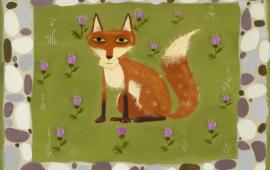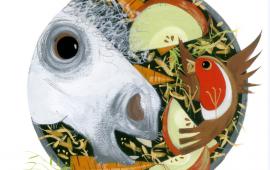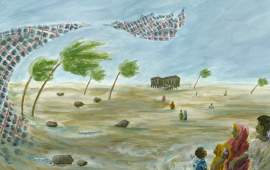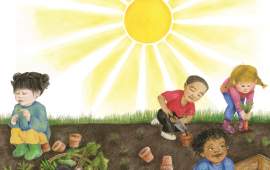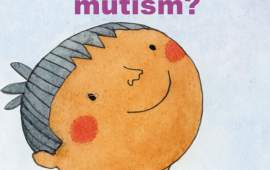Bugs and butterflies, seaweed and stars – nature surveys for citizen scientists
Trusty bird guide in hand (or at least downloaded to the tablet), we donned our waterproofs and wellies, made a flask of coffee, braved the weather, and settled down under the overhang of the garden shed. From there we could watch what brave birds ventured onto our domain.
Not many, it turned out. There was one very, very brave (and soggy) woodpigeon and one (equally soggy) cheeky magpie. (Since he was on his own, we made sure we gave the traditional country greeting of "Good morning, Mr Magpie, how are Mrs Magpie and all the other little magpies?"
The seagulls decided they were perfectly happy on the chimney pots, thank you, and we saw no sign of the blackbirds, robins, sparrows and swifts who occasionally frequent our abode. I came to the conclusion they were all tucked up inside, very sensibly, with the bird equivalent of a nice cup of hot chocolate and a toasted crumpet or two.
So, having just completed this year’s RSPB Big Garden Birdwatch, it got us thinking about other surveys of wildlife. We knew about the Big Butterfly Count already, but did you know there’s a whole database of surveys going on? Over 200 of them in total, and you can search for the ones that interest you.
It isn’t only the RSPB that run them; the Woodland Trust have surveys, as does the Bat Conservation Trust, the Mammal Trust, and many others. For many of the surveys, it’s possible to download a worksheet with tick boxes that can be printed out and completed offline and the information submitted later. For others, you need access to a phone or Wi-Fi connected tablet then and there.
Whether it’s birds, butterflies, bugs or mini-beasts that fascinate you, this is a great way to keep track of their habits, and contribute to the body of knowledge that helps scientists and conservationists work out what’s happening to our environment. You can even help to monitor fungi or trees or seaweed or stars if you’d prefer to observe subjects that are rather less wriggly, or mammals if you’re more interested in larger creatures.
While many of the surveys are national or even international, you might also find that your local wildlife trust or conservation area also runs projects to keep track of how healthy their areas are. This “citizen science” approach helps to build up a more comprehensive picture of the health of our ecosystems.
So we’re just wondering what it’s going to be next – bats, butterflies, flowers, mushrooms, trees, or seaweed….
References
(All websites were accessed successfully on 31 January 2020)
Not many, it turned out. There was one very, very brave (and soggy) woodpigeon and one (equally soggy) cheeky magpie. (Since he was on his own, we made sure we gave the traditional country greeting of "Good morning, Mr Magpie, how are Mrs Magpie and all the other little magpies?"
The seagulls decided they were perfectly happy on the chimney pots, thank you, and we saw no sign of the blackbirds, robins, sparrows and swifts who occasionally frequent our abode. I came to the conclusion they were all tucked up inside, very sensibly, with the bird equivalent of a nice cup of hot chocolate and a toasted crumpet or two.
So, having just completed this year’s RSPB Big Garden Birdwatch, it got us thinking about other surveys of wildlife. We knew about the Big Butterfly Count already, but did you know there’s a whole database of surveys going on? Over 200 of them in total, and you can search for the ones that interest you.
It isn’t only the RSPB that run them; the Woodland Trust have surveys, as does the Bat Conservation Trust, the Mammal Trust, and many others. For many of the surveys, it’s possible to download a worksheet with tick boxes that can be printed out and completed offline and the information submitted later. For others, you need access to a phone or Wi-Fi connected tablet then and there.
Whether it’s birds, butterflies, bugs or mini-beasts that fascinate you, this is a great way to keep track of their habits, and contribute to the body of knowledge that helps scientists and conservationists work out what’s happening to our environment. You can even help to monitor fungi or trees or seaweed or stars if you’d prefer to observe subjects that are rather less wriggly, or mammals if you’re more interested in larger creatures.
While many of the surveys are national or even international, you might also find that your local wildlife trust or conservation area also runs projects to keep track of how healthy their areas are. This “citizen science” approach helps to build up a more comprehensive picture of the health of our ecosystems.
So we’re just wondering what it’s going to be next – bats, butterflies, flowers, mushrooms, trees, or seaweed….
References
(All websites were accessed successfully on 31 January 2020)
- Citizen Science (c2020), National History Museum, https://www.nhm.ac.uk/take-part/citizen-science.html
- Current Surveys And Projects (c2020), The Mammal Society, https://www.mammal.org.uk/science-research/surveys/
- Find A Survey Or Scheme (c2020), National Biodiversity Network, https://nbn.org.uk/tools-and-resources/useful-websites/database-of-wildlife-surveys-and-recording-schemes/
- Stamp, A. (2015), How To Salute A Magpie, Country Life, 19 March 2015, https://www.countrylife.co.uk/country-life/how-to-salute-a-magpie-70304
Related Posts
-
New Year Resolutions
-
Amazing Audio Books - And How They Can Help Literacy Skills
-
Spotlight on Irish
-
Framily - when Friends become Family
-
Bangladesh And East India Bear The Brunt Of Cyclone Amphan In The Midst Of COVID-19
-
National Children's Gardening Week 2021
-
Chinese New Year: Year of the Pig
-
Tiny Happy People - Beautifully Bilingual
-
What is Selective Mutism?
-
Once Upon a Storytime


